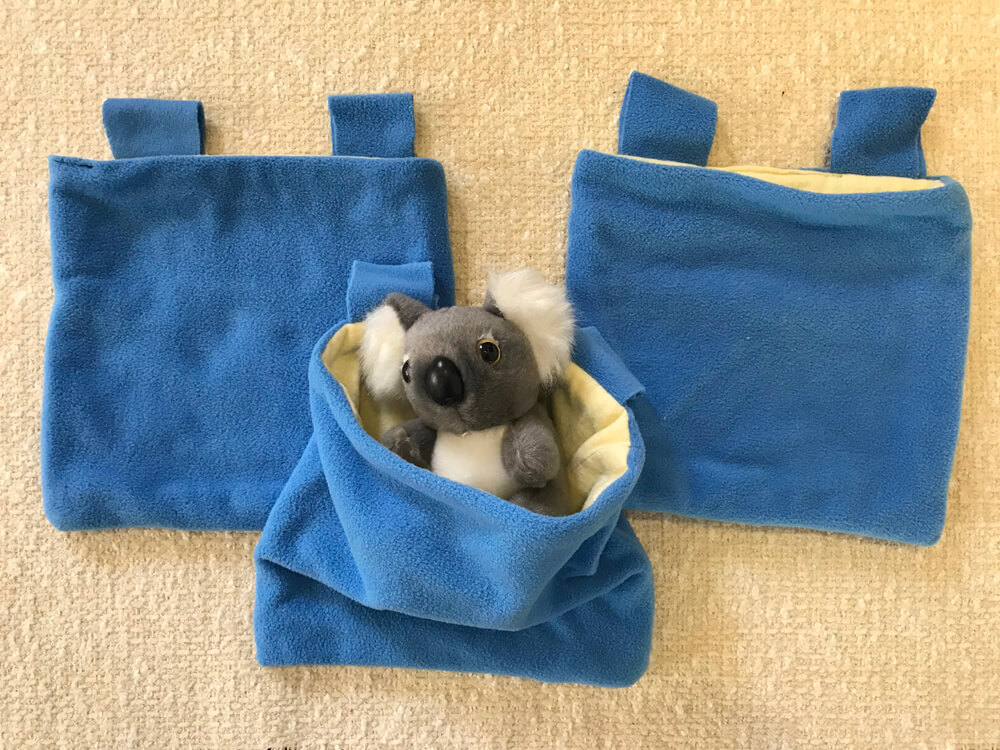Crieff Community Unites to Help Australian Animals
This blog documents the time our independent English language School mobilised for the Australian animal emergency.
We turned part of our open-plan teaching space into a community-wide drop-in sewing hub.
More so, we organised and coordinated the community efforts through our social media.
This blog describes how we turned our language school resources to emergency use.
It is also a celebration of Crieff and the region Strathearn, for having such big hearts and talented people.


Why on Earth did an Independent Language School Start Sewing?
We did it because we could.
- Firstly because we are an independent English language school we can move and react quickly to our times.
- Secondly, of course, we were motivated by wanting to help. The images coming from Australia were heartbreaking and we needed to act.
- Thirdly, January is a quiet time of year for us.
We had the space and time and we knew we could do this without compromising any of our student’s expereinces.
- Lastly, our English language school is an English language hub.
We are all about getting people together and making things happen – with our English language learners joining in for the breadth of experience this brings.
We don’t really do classrooms. We show you real life.
That’s why our motto is Live language learning.

Socal Action | How to Administer a Facebook Page
In this post, I thought it could be interesting to look back specifically at editing our temporary Facebook page, Crieff for Aussie Critters, which helped bring so many local people together so quickly.
The majority of our English learners are creatives – artists, designers and makers – and marketing your own work or your collectives’ work is a large part of the tasks of an early career artist/designer.
Global Action
“It is the first time that I’ve been involved in any global movement like it, and I was impressed how social media played a vital role.”
Ruth, 2020

Step 1. Starting a Facebook Group
It is one month since we turned our English language School Blue Noun into a pop-up drop-in workshop, inviting people to come to sew, knit and craft the bedding urgently needed for the animal victims of the Australian bushfires.
Our header image was taken from elsewhere on Facebook. It melted my heart when I first saw it, and it still does.


How to Start Your Own Facebook Group
Creating a Facebook group page is easy enough. Click and add a header image (optional), add a description and then invite people in your own contacts to become administrators if you want some help.
Here’s our description.


Step 2: Running a Facebook Group
It was quickly clear that running the group would take up a lot of time – and personally, I was better serving the project running the Facebook group than trying to master a French seam on a sewing machine.
I posted images of the first workshop in the drive to encourage other people to get involved.
I then shared these post (which was on the Crieff Critters page) around onto local community group pages to make it as visible as possible.
Facebook Group Tips
Tip 1: if you share from your group page, it is easy for people to click the link and get onto your Facebook page. In contrast, if you just post directly onto the group without leaving a link, it is much less effective.

Quick and Immediate
Once people requested to join the group – and (of course) were accepted, they got all new updates immediately into their own news feed.

Step 3: How to Reach People not on Facebook
We asked our audience to reach out and tell people they knew.
Local journalist, Lynn MacGregor saw what our group were up to online and ran a print article in the Strathearn Herald about us.

“All around us in our small Scottish town, people were feeling moved and helpless by the news coming from Australia.”
Now people who perhaps didn’t have extra money to give could donate time and skills to this cause, and make an impact.”
Ruth, 2020

Step 4: Love Canva | About Graphics
Thanks to Canva anyone can drag and drop images and arrange both graphics and font over the top.
Free Graphics For All


Step 5: Use a Variety of Media
Step 6: Keep Momentum High
From this point on, the doorbell rang regularly, with people handing in beautifully made finished objects.
It was such a joy to be receiving these donations, that I decided to take photos and share them on Facebook as they came in. Perhaps some more people would be inspired.
Ultimately I hoped anyone already beavering away in isolation would share the buzz from seeing these remarkable pieces, and feel part of a larger community – both local and global.

Know What Will Get Visible
For the sake of a good photo, sometimes we added our little assistant in to help model the work.

Step 7: Be Reactive and Flexible
An unforeseen aspect of our independent English language school turning into a pop-up sewing workshop for Australian animal wildfire victims was that we also attracted children to our cause.
Of course we did. We were shouting into the community that everyone could help. It shouldn’t have been a surprise that kids wanted to get involved.
And of course we had to let them – although to be quite frank, it did slow the production line down a bit. At one point we moved experienced sewers off the sewing machines to let kids have a shot, which involved giving sewing lessons and rethreading a few needles and not much making..
It was a bit of a frustration, but we’re not going to disempower anyone and we are here to share information and get diverse people working together. Anyway, experienced sewers are also skilled cutters and the production line continued.
We gave the kids special shout outs on social media too and this attracted families from as far away as Glasgow to send stuff to us.



Step 8: Have a Clear Project End & Outcome
Know what you want to achieve and have a deadline to get it done.
All together the town of Crieff (and region) made around 200 items, which were collected up at Blue Noun and delivered, by Mo and Kath, of the wonderful Moka Pottery, to a collection hub in Falkirk, where they were part of an international stocktake that oversaw the distribution of all UK produced items, getting them straight to the parts of Australia in most need.

Step 9: Communicate Results
Share what you have all achieved together and leave everyone in your project empowered – and with a follow on activity should they wish one (a lot of our group went on to make small teddy bears for children in crisis around the world).

“I love to know that somewhere, in Australia, there are young orphaned marsupials sleeping in tartan pouches, produced by the wonderful community around Crieff, Scotland.“
Ruth, 2020
Looking Back on a Busy Time
We are extremely proud of our lead role in this project.
Our independent English language School united a community & made people feel useful
Because of Blue Noun Language Hub, people who perhaps didn’t have extra money to give could donate time and skills to this cause and make an impact in the horror.
Not everyone who showed up knew how to sew – or even how to cut fabric, but there were always people with more experience on hand to show them how they could be useful – even for half an hour. Local businesses showed support – especially MoKa, who sewed for weeks.
“Now people who perhaps didn’t have extra money to give could donate time and skills to this cause, and make an impact.”
Ruth, 2020
A Global Effort
It’s equally wonderful that towns and communities around the whole world came together to craft for this cause. People have such kind hearts.
Special thanks to Moka Pottery, who made it all happen.
The Big Picture
Although the immediate need for crafted bedding has been satiated, we can’t forget the continuing horrific damage to people’s homes and livelihoods – and across the ecosystems and habitats as bushfires still burn.
Please donate financially if you can.

